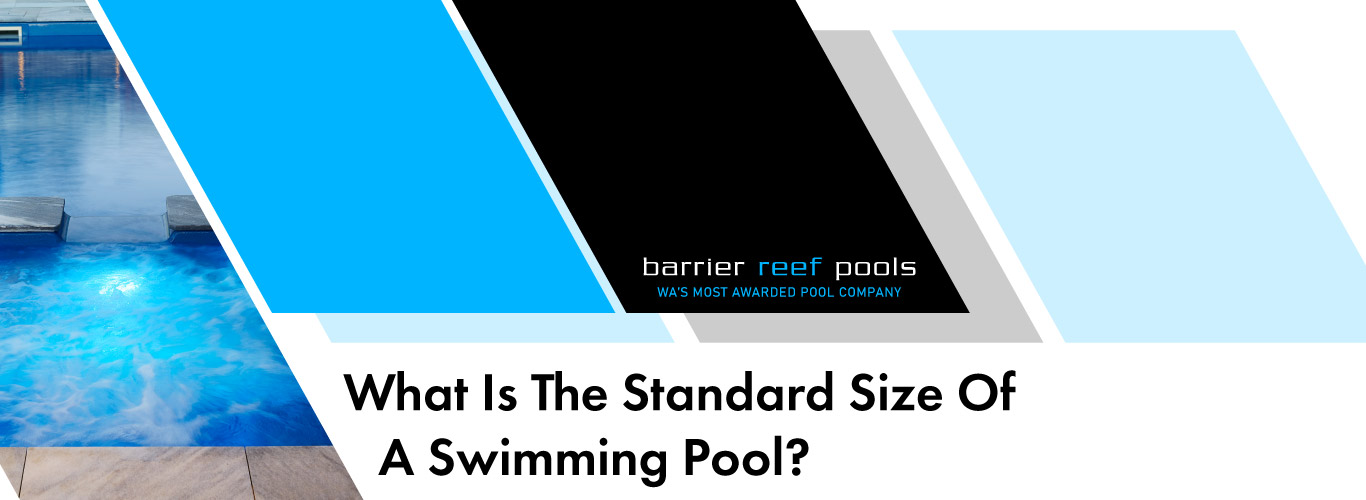Does size matter when it comes to buying a swimming pool? Most people choose a pool which will work with the size of their backyard, but visitors to our display centres always seek our advice about the size of pool they should buy for their home. While it’s good to have a benchmark of your average pool and to know the standard size of a swimming pool, you really need to purchase a pool that meets your own personal circumstances.

Rectangular Pools Or Freeform Shape
Most modern swimming pools are rectangular in shape. Kidney shape and curved pools were hugely popular in the 80s. It’s up to you what shape you choose, but rectangular pools provide maximum pool space. They blend in well with houses because of the angular lines and they leave plenty of room for hard decking or landscaping.
As a guide, most rectangular pools are about twice as long on one side as they are on the other. Your average pool size for your average family is around nine metres in length with a width of four metres and a depth of 1.7 metres.
Remember this is a guide only.

Are Pools Getting Bigger Or Smaller?
The average pool size has reduced over the past 10 years along with the size of most backyards. Block sizes are smaller and that means less space for outdoor living. Plunge pools and lap pools have become popular because they are great for confined space.
A smaller pool will be more economical because there’ll be less water and less chemicals.
What's The Difference Between A Lap Pool And A Plunge Pool?
Lap pools are long and narrow and are superb for exercising, building up strength and improving health and fitness goals. Sizing can vary.
A plunge pool best describes a pool which is larger than a spa but smaller than a swimming pool and works well in smaller backyards and confined areas. They are intended for relaxation rather than serious swimming and are usually shallow and have a ledge or seating area so you can enjoy the ambience. They are called plunge pools because they’re ideal for cooling down, plunging into the water to feel refreshed.
The benefit of both plunge pools and lap pools are that they mean less cleaning, so less time spent on them and because they’re smaller, they need less water and chemicals too.
What's Considered A Small Pool and What's A Large One?
A small pool is anything up to seven metres long. Most large fibreglass pools are no bigger than 12 metres long.
A medium sized pool would hold about 16,000 gallons but this can vary on the depth of the pool.
Fibreglass pools are transported to your backyard by road and anything larger would just not be practical.
Barrier Reef Pools Perth knows how to transform a backyard. When it comes to pool knowledge, we’re tops. With extensive experience behind us, we can answer all your fibreglass pool questions, so why not come and visit one of our display centres this week?






